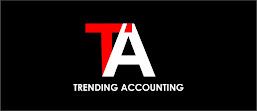How to Detect Fraud in a Business
 |
| Accounting Fraud |
Fraud is common in also every business, offices, governmental and nongovernmental organizations. Although fraud can not be total eradicated, but I shall give us tips on how to detect fraud in your company.
How To Detect Fraud In A Business
Here is a list of items to help you detect fraud in your company or a client's company.
1. Unusual Behavior
The perpetrator will often display unusual behavior, that when taken as a whole is a strong indicator of fraud. The fraudster may not ever take a vacation or call in sick in fear of being caught.
He or she may not assign out work even when overloaded. Other symptoms may be changes in behavior such as increased drinking, smoking, defensiveness, and unusual irritability and suspiciousness.
ALSO READ: Principles And Practice Of Double Entry
2. Complaints
Frequently tips or complaints will be received which indicate that a fraudulent action is going on. Complaints have been known to be some of the best sources of fraud and should be taken seriously.
Although all too often, the motives of the complainant may be suspect, the allegations usually have merit that warrant further investigation.
3. Stale Items in Reconciliations
In bank reconciliations, deposits or checks not included in the reconciliation could be indicative of theft. Missing deposits could mean the perpetrator absconded with the funds; missing checks could indicate one made out to a bogus payee.
4. Excessive Voids
Voided sales slips could mean that the sale was rung up, the payment diverted to the use of the perpetrator, and the sales slip subsequently voided to cover the theft.
5. Missing Documents
Documents which are unable to be located can be a red flag for fraud. Although it is expected that some documents will be misplaced, the auditor should look for explanations as to why the documents are missing, and what steps were taken to locate the requested items.
All too often, the auditors will select an alternate item or allow the auditee to select an alternate without determining whether or not a problem exists.
ALSO READ: Types Of Accounting
6. Excessive Credit Memos
Similar to excessive voids, this technique can be used to cover the theft of cash. A credit memo to a phony customer is written out, and the cash is taken to make total cash balance.
7. Common Names and Addresses for Refunds
Sales employees frequently make bogus refunds to customers for merchandise. The address shown for the refund is then made to the employee's address, or to the address of a friend or co-worker.
8. Increasing Reconciling Items
Stolen deposits, or bogus checks written, are frequently not removed, or covered, from the reconciliation. Hence, over a period of time, the reconciling items tend to increase.
ALSO READ: History Of Accounting
9. General Ledger Out-of-Balance
When funds, merchandise, or assets are stolen and not covered by a fictitious entry, the general ledger will be out of balance. An inventory of the merchandise or cash is needed to confirm the existence of the missing assets.
10. Adjustments to Receivables or Payables
In cases where customer payments are misappropriated, adjustments to receivables can be made to cover the shortage. Where payables are adjusted, the perpetrator can use a phony billing scheme to convert cash to his or her own use.
11. Excess Purchases
Excess purchases can be used to cover fraud in two ways:
- Fictitious payees are used to convert funds.
- Excessive purchases may indicate a possible payoff of purchasing agent.
12. Duplicate Payments
Duplicate payments are sometimes converted to the use of an employee. The employee may notice the duplicate payment, then he or she may prepare a phony endorsement of the check.
13. Ghost Employees
Ghost employee schemes are frequently uncovered when an auditor, fraud examiner, or other individual distributes paychecks to employees. Missing or otherwise unaccounted for employees could indicate the existence of a ghost employee scheme.
14. Employee Expense Accounts
Employees frequently conceal fraud in their individual expense account reimbursements. These reimbursements should be scrutinized for reasonableness and trends, especially in the area of cash transactions on the expense account.
ALSO READ: Meaning Of Assets: Fixed And Current Assets
15. Inventory Shortages
Normal shrinkage over a period of time can be computed through historical analysis. Excessive shrinkage could explain a host of fraudulent activity, from embezzlement to theft of inventory.
16. Increased Scrap
In the manufacturing process, an increased amount of scrap could indicate a scheme to steal and resell this material. Scrap is a favorite target of embezzlers because it is usually subject to less scrutiny than regular inventory.
17. Large Payments to Individuals
Excessively large payments to individuals may indicate instances of fraudulent disbursements.
18. Employee Overtime
Employees being paid for overtime hours not worked by altering time sheets before or after management approval.
19. Write-off of Accounts Receivable
Comparing the write-off of receivables by customers may lead to information indicating that the employee has absconded with customer payments.
20. Post Office Boxes as Shipping Addresses
In instances where merchandise is shipped to a post office box, this may indicate that an employee is shipping to a bogus purchaser.
Conclusion: How to Detect Fraud in a Business
Fraud can destroy your business, so you should do everything to avoid it, whether it is coming from employees, partners, or customers.
Detecting fraud is not an easy task, and in most cases, it can take a long time before you set up a system where it will not thrive.










